Mike Connor, NRA Certified Pistol Instructor
Veritas Training Academy
Hans Gruber: “Do you really think you have a chance against us, Mr. Cowboy?”
John McClane: “Yippee-ki-yay, mother*#@.”
Die Hard, 1998
The first article was meant to introduce and to establish the rationale for and responsibility toward becoming more than a “gun owner”. When queried by friends, family, and associates about “What’s new in your life” the responses I received when I told them “I’m learning to be a gunfighter” were, as you can imagine, surprised, incredulous but most often… “WHAT?”
Explaining exactly what I meant dispelled the notion of cowboys facing off at high noon! How exactly did I get from taking a CCW course to wanting to become a Gunfighter?
After completing my CCW course at Take Aim, I thought it would be responsible to invest in a single lesson. I wanted to be able to hit the bulls-eye consistently on the paper target. Since I hadn’t had guns my whole life there was probably something I could learn. The idea of needing anything beyond that had not entered my mind. I just “thought” that I’d be able to handle any situation requiring me to defend myself with a firearm. However, after spending an hour with Mike Magowan, co-founder of Veritas Training Academy, I quickly realized that there was much more involved and I was a long way from being able to use my firearm skillfully.
First I needed to develop my skill as a marksman. Skill development is the process of learning new things and improving yourself at every level imaginable. It is not a term used exclusively and only in a work environment. Mike took time to go over grip, punching out from “third eye” and discussed the two most important aspects of marksmanship; trigger control and sight acquisition. Once on the range I quickly demonstrated my ability to hit low and to the left of the bulls eye (jerking the trigger). He suggested I work on dry firing; focusing on a smooth, even depress of the trigger. This activity is the building block of developing your trigger control. Every aspiring gunfighter can and should dry fire on a regular basis. It costs nothing and can be accomplished any time day or night (in the privacy of your own home.)
You need to become a marksman before you can become a gunfighter. In an article by Charles Remsberg from PoliceOne.com News he states, “Marksmanship skills are critical to have, but that’s only a small part of the equation. Marksmanship performance is not even remotely predictive of how you will do in a gunfight.”


